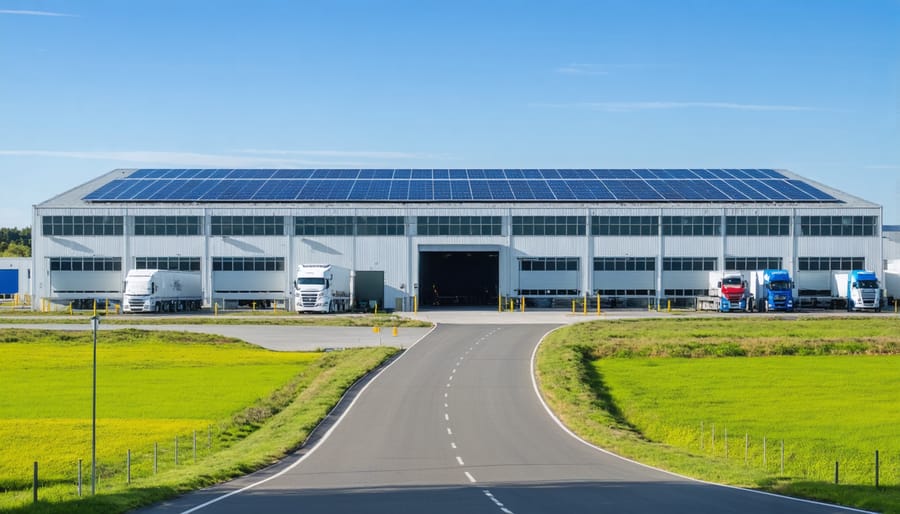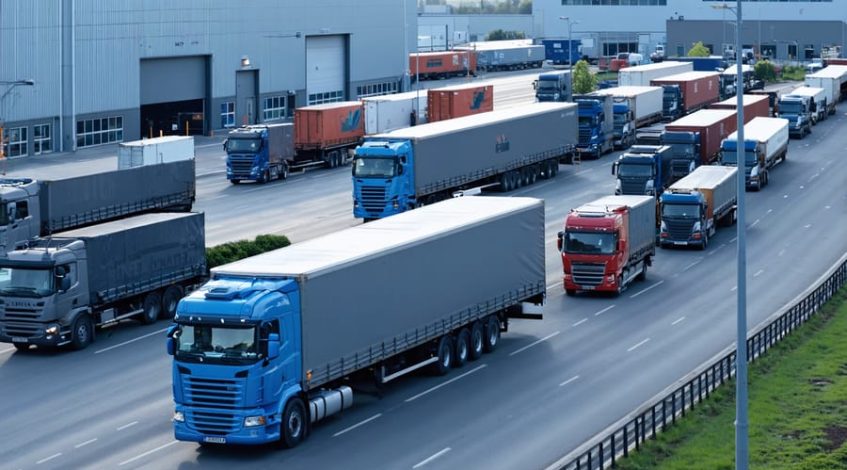Decarbonizing supply chains has become a strategic imperative for businesses navigating the evolving landscape of environmental regulations and stakeholder expectations. As global corporations commit to ambitious net-zero targets, supply chain emissions—which often account for more than 70% of a company’s carbon footprint—represent both the greatest challenge and opportunity for meaningful climate action. Forward-thinking organizations are revolutionizing their supply networks through innovative technologies, data-driven decision-making, and collaborative partnerships that transform traditional linear models into sustainable, circular ecosystems.
The urgent need to reduce scope 3 emissions has catalyzed unprecedented investment in clean energy infrastructure, sustainable transportation solutions, and breakthrough carbon capture technologies across global supply chains. Companies leading this transition are discovering that decarbonization initiatives not only support environmental goals but also drive operational efficiency, enhance resilience against climate-related risks, and create compelling competitive advantages in an increasingly carbon-conscious marketplace.
This comprehensive transformation of supply chain operations represents a fundamental shift in how businesses create, deliver, and capture value while addressing one of humanity’s most pressing challenges. Understanding the strategic approaches, technologies, and best practices for supply chain decarbonization has become essential for organizations seeking to thrive in a low-carbon future.
The Business Case for Supply Chain Decarbonization
Cost Benefits and ROI
Implementing supply chain decarbonization initiatives delivers substantial financial returns beyond environmental benefits. Companies adopting industrial decarbonization strategies typically see a 15-30% reduction in operational costs within the first three years. These savings primarily come from reduced energy consumption, optimized transportation routes, and decreased waste management expenses.
The ROI potential is particularly compelling when considering long-term market dynamics. Organizations that invest in sustainable supply chains often experience enhanced brand value, improved stakeholder relations, and increased market share. Studies show that companies with robust decarbonization programs command an average 12% price premium on their products and services.
Cost benefits also emerge through regulatory compliance and risk mitigation. As carbon pricing mechanisms become more prevalent globally, early adopters of decarbonization initiatives avoid potential penalties and carbon taxes. Additionally, sustainable supply chains prove more resilient to market disruptions, with reduced exposure to fossil fuel price volatility and supply chain interruptions.
Investment in renewable energy infrastructure and efficient technologies typically achieves break-even within 4-6 years, while delivering consistent returns thereafter through reduced operational expenses and enhanced resource efficiency.
Meeting Regulatory Requirements
Global regulatory frameworks for supply chain emissions are becoming increasingly stringent, with notable legislation emerging across major markets. The EU’s Carbon Border Adjustment Mechanism (CBAM) represents a landmark shift, requiring companies to report and pay for carbon emissions embedded in imported goods. Starting in 2026, organizations must comply with comprehensive emissions reporting requirements or face significant financial penalties.
In North America, the SEC’s proposed climate disclosure rules will mandate public companies to report Scope 3 emissions, including those from their supply chains. Similarly, Canada’s Clean Fuel Regulations impose new requirements on fuel suppliers to reduce their carbon intensity across the supply chain.
Organizations must also navigate region-specific regulations, such as California’s Cap-and-Trade Program and China’s national Emissions Trading Scheme. These programs establish mandatory emissions caps and trading mechanisms that directly impact supply chain operations.
To ensure compliance, companies should implement robust emissions tracking systems, conduct regular supply chain audits, and maintain detailed documentation of reduction efforts. Early adoption of emissions reduction strategies not only ensures regulatory compliance but also positions organizations advantageously for future legislative changes.

Key Strategies for Supply Chain Decarbonization
Renewable Energy Integration
The integration of renewable energy sources into supply chain operations represents a critical step toward achieving comprehensive decarbonization goals. Solar power installations, in particular, have emerged as a cornerstone solution, offering both environmental benefits and substantial cost savings for warehouses, distribution centers, and manufacturing facilities.
Companies are increasingly adopting a multi-faceted approach to renewable energy integration. Solar panels on facility rooftops and parking structures serve dual purposes: generating clean electricity while maximizing existing infrastructure. These installations can be complemented by wind power, especially in regions with favorable conditions, and emerging technologies like green hydrogen applications for energy storage and heavy transport.
Leading organizations are implementing smart grid technologies to optimize their renewable energy usage. These systems enable real-time monitoring of energy consumption, automated load balancing, and seamless integration with local power utilities. For example, BMW’s manufacturing facility in Leipzig incorporates four wind turbines that provide 20% of its energy needs, while Amazon has committed to powering its operations with 100% renewable energy by 2025 through large-scale solar and wind projects.
The transition to renewable energy in supply chains also involves strategic partnerships with energy providers and the development of virtual power purchase agreements (VPPAs). These arrangements ensure stable energy costs while supporting the expansion of renewable energy infrastructure, creating a win-win situation for businesses and the environment.
Transportation Optimization
Transportation accounts for a significant portion of supply chain emissions, making it a critical focus area for decarbonization efforts. Companies are increasingly adopting zero-emission transportation solutions through various strategic approaches.
Route optimization software and advanced analytics help companies minimize travel distances and maximize load efficiency. By implementing these tools, businesses typically reduce fuel consumption by 10-15% while maintaining delivery schedules. Fleet electrification represents another crucial strategy, with electric vehicles offering both environmental benefits and lower operational costs over their lifecycle.
Intermodal transportation combines different modes of transport to minimize emissions. For instance, shifting long-haul freight from road to rail can reduce carbon emissions by up to 75%. Companies are also exploring alternative fuels like biodiesel and hydrogen for heavy-duty vehicles where electrification may not yet be feasible.
Last-mile optimization through micro-fulfillment centers and cargo bikes in urban areas helps reduce emissions while improving delivery efficiency. Additionally, partnerships with sustainable logistics providers and participation in green shipping programs enable businesses to leverage shared resources and expertise in reducing transportation-related emissions.
Regular fleet maintenance, driver training programs, and real-time monitoring systems further contribute to fuel efficiency and emissions reduction, creating a comprehensive approach to sustainable transportation management.
Supplier Engagement and Collaboration
Effective supplier engagement is crucial for achieving meaningful emissions reductions across the supply chain. Organizations should begin by establishing clear sustainability criteria and expectations for suppliers, incorporating these requirements into procurement policies and supplier agreements. This can include setting specific emissions reduction targets, requesting regular environmental performance reports, and establishing minimum sustainability standards.
Collaboration with suppliers can take various forms, from knowledge sharing and technical support to joint investment in clean energy projects. Leading companies are implementing supplier development programs that provide training, resources, and tools to help suppliers measure and reduce their carbon footprint. Some organizations have successfully established supplier sustainability councils or working groups to facilitate best practice sharing and collective problem-solving.
Financial incentives play a vital role in encouraging supplier participation. This might include preferential contract terms for suppliers meeting sustainability targets, cost-sharing arrangements for emissions reduction initiatives, or access to green financing programs. Companies like Apple and BMW have implemented successful supplier clean energy programs, helping their partners transition to renewable energy sources through direct investment and technical expertise.
Digital platforms and standardized reporting frameworks are increasingly being used to track and measure supplier emissions performance. These tools enable real-time monitoring of progress, facilitate data sharing, and help identify areas for improvement. Regular supplier assessments and recognition programs can further motivate continuous improvement in environmental performance.

Measuring and Tracking Progress
Carbon Accounting Methods
Carbon accounting in supply chains relies on three primary methodologies: the Greenhouse Gas Protocol, ISO 14064 standards, and Life Cycle Assessment (LCA). The GHG Protocol, widely recognized as the gold standard, categorizes emissions into three scopes: direct emissions from owned operations (Scope 1), indirect emissions from purchased energy (Scope 2), and all other indirect emissions within the supply chain (Scope 3).
Organizations typically begin by establishing their operational boundaries and collecting activity data across their supply chain networks. This includes energy consumption, transportation metrics, raw material usage, and waste generation. Advanced measurement technologies, such as IoT sensors and smart meters, enable real-time monitoring of energy consumption and emissions across facilities.
For accurate accounting, companies employ a combination of primary and secondary data. Primary data comes directly from suppliers and operational measurements, while secondary data relies on industry averages and emission factors from recognized databases. Leading organizations are increasingly implementing automated data collection systems and specialized carbon accounting software to ensure consistency and reliability in their measurements.
Verification and assurance processes play a crucial role in maintaining credibility. Third-party verification, following standards like ISO 14064-3, helps validate emission calculations and ensure compliance with reporting requirements. Regular audits and updates to measurement methodologies ensure alignment with evolving industry standards and regulatory frameworks.
Technology Solutions
Modern technology platforms are revolutionizing how organizations track and manage their supply chain emissions. Cloud-based solutions now enable real-time monitoring of carbon footprints across multiple tiers of suppliers and operations. These digital tools integrate data from various sources, including energy consumption meters, transportation logistics, and manufacturing processes, to provide comprehensive emissions tracking.
Leading enterprise software providers offer specialized modules for carbon accounting and reporting. These platforms feature automated data collection, standardized calculation methodologies, and customizable dashboards that visualize emissions data. Organizations can set reduction targets, track progress, and generate detailed reports for stakeholders and regulatory compliance.
Blockchain technology is emerging as a powerful tool for supply chain transparency. It creates an immutable record of emissions data, ensuring accuracy and accountability throughout the value chain. IoT sensors and smart meters contribute to this ecosystem by providing granular, real-time data on energy usage and emissions.
Artificial Intelligence and Machine Learning algorithms analyze this data to identify patterns and optimization opportunities. These systems can predict emission trends, suggest reduction strategies, and automate reporting processes. Mobile applications extend these capabilities to field operations, enabling real-time data collection and verification.
Advanced analytics tools help organizations model different scenarios and evaluate the impact of various decarbonization initiatives. This data-driven approach enables more informed decision-making and helps prioritize investments in emission reduction strategies.

Real-World Success Stories
Several leading organizations have successfully implemented decarbonization initiatives across their supply chains, demonstrating both environmental and economic benefits. Walmart, for instance, launched its Project Gigaton in 2017, which has already eliminated over 230 million metric tons of emissions from its global supply chain through collaborative efforts with suppliers and the adoption of renewable energy solutions.
Unilever presents another compelling case study, having achieved 100% renewable electricity across its operations in five continents. The company’s innovative approach included implementing sustainable agriculture practices and establishing power purchase agreements (PPAs) with local renewable energy providers, resulting in a 46% reduction in operational emissions since 2008.
Microsoft’s supply chain transformation stands out for its comprehensive approach. The tech giant implemented a supplier scoring system that factors in carbon performance, leading to a 17% reduction in scope 3 emissions. Their program includes financial incentives for suppliers who meet decarbonization targets and technical support for implementing clean energy solutions.
In the manufacturing sector, BMW Group has demonstrated remarkable progress by reducing CO2 emissions per vehicle produced by 78% since 2006. The company achieved this through a combination of energy-efficient manufacturing processes, on-site renewable energy generation, and strategic supplier partnerships focused on circular economy principles.
Maersk, the global shipping company, has pioneered the use of biofuels in container vessels, reducing emissions by 85% compared to traditional fuels. They’ve also committed to achieving net-zero emissions by 2040 through investments in green methanol-powered vessels and shore-power connections.
These success stories share common elements: clear target-setting, systematic measurement of emissions, strong supplier engagement, and significant investments in renewable energy infrastructure. They demonstrate that supply chain decarbonization is not only achievable but can also drive operational efficiency and competitive advantage.
Decarbonizing the supply chain represents a critical imperative for modern businesses, not just for environmental sustainability but for long-term competitive advantage. Throughout this discussion, we’ve explored various strategies and approaches that organizations can implement to reduce their carbon footprint while maintaining operational efficiency.
The key to successful supply chain decarbonization lies in taking a systematic, multi-faceted approach. Organizations should begin by conducting comprehensive emissions assessments, setting science-based targets, and developing clear roadmaps for implementation. Prioritizing supplier engagement, investing in renewable energy solutions, and optimizing logistics networks emerge as fundamental steps in this journey.
For immediate action, businesses should focus on these practical steps:
– Establish baseline measurements and tracking systems for emissions
– Engage key suppliers in carbon reduction initiatives
– Implement energy-efficient technologies across operations
– Transition to renewable energy sources where feasible
– Optimize transportation routes and vehicle utilization
– Invest in sustainable packaging solutions
– Regular monitoring and reporting of progress
Remember that decarbonization is not just an environmental imperative but a business opportunity. Organizations that act now position themselves advantageously for future regulations, customer preferences, and market demands. Success requires commitment from leadership, clear communication across the organization, and consistent measurement of progress against established goals.
By embracing these strategies and maintaining a long-term perspective, businesses can create resilient, sustainable supply chains that deliver both environmental and economic benefits.

